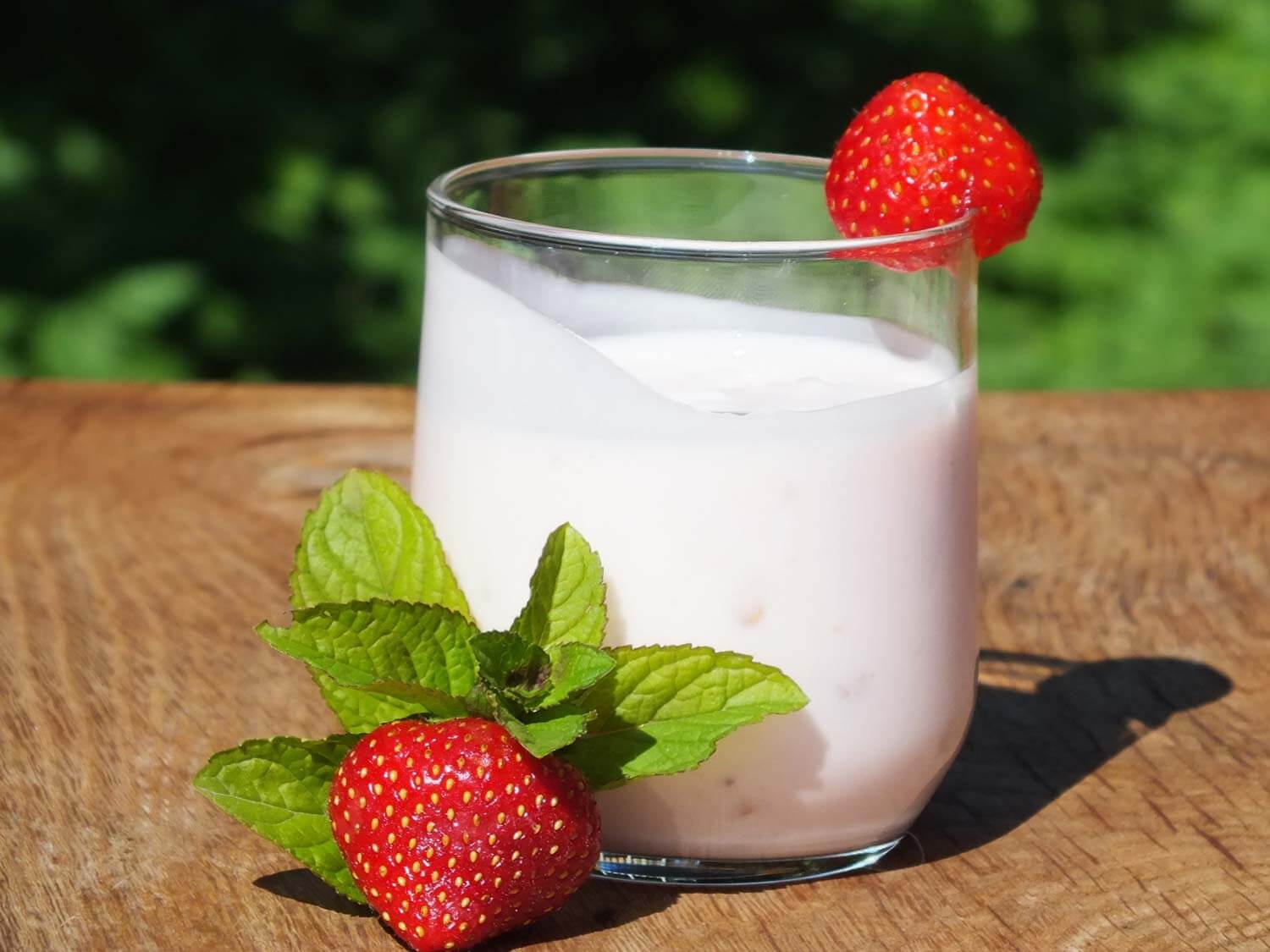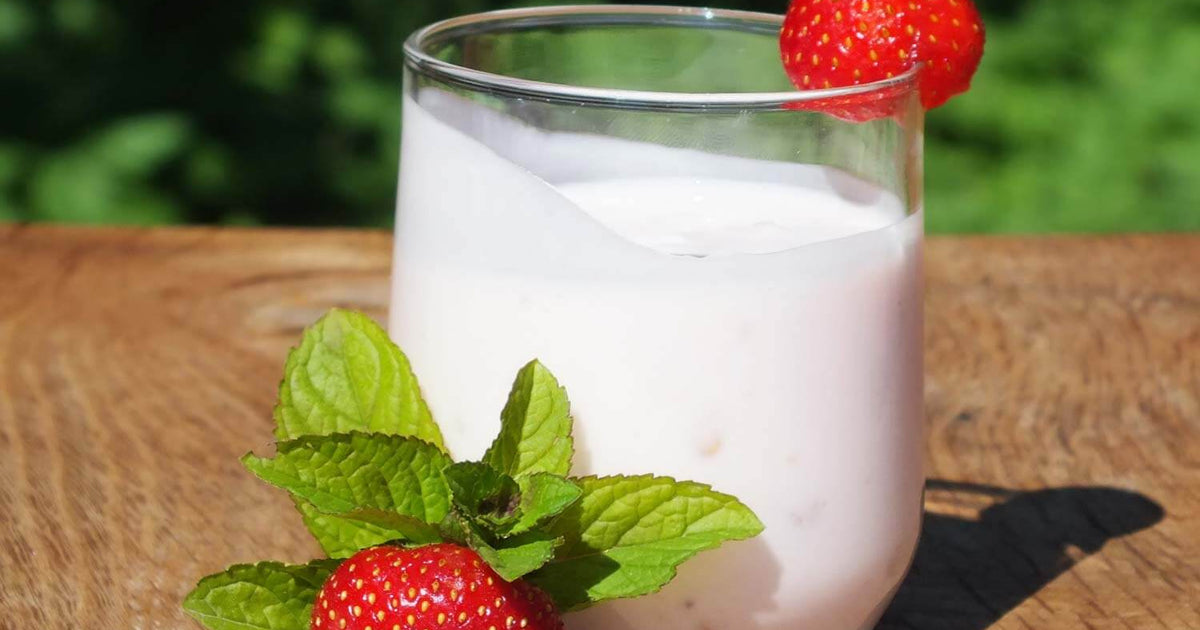
Kefir Recipe
-
Aging Time
None
-
Skill Level
Beginner
-
Author
Jim Wallace

Kefir Recipe Info
What is Kefir
Why Make Kefir
Kefir vs. Yogurt
How to Make Kefir
Ingredients
Total price for selected items: Total price:
Instructions
-

Heat Milk
One Gallon of milk is only mildly heated (86F) preserving these enzymes and bacteria. Some folks suggest doing this at room temp but we find that 86F is the optimum temp to start the cultures activity. It can then be allowed to cool to room temp as the milk ripens in the final step.
-

Add Culture
Transfer the milk to a sanitized container then add 1 pack of kefir culture and stir well into the warm milk.
Note: if you have a fresh batch of Kefir already made up, you can add about 1-1.5 tablespoons of this per quart of milk. You can continue doing this for several generations until the Kefir begins to change in character.
-

Ripen
This is then covered allowed to ripen at room temperature (68-72F) for 8 to 18 hours or more depending on the character you would like in your Kefir.
Longer time and warmer temps will make a more tangy tasting Kefir. With each batch you make, adjust the time until you get it just the way you like it.
-

Adjustments
Time and temperature are the two control factors that determine the thickness and taste of your Kefir. In the warmer months Kefir may be ready to drink in 18 hours. If allowed too ripen too long at higher room temperature, it will become acidic, thick, and eventually the whey will begin to separate. If your Kefir is "lumpy" and too sour, it has ripened too long or at too high a temperature. It should be creamy and perhaps a little thicker than milk. At this point, shake it well and place the Kefir into your refrigerator. It will thicken a little more since the culture will continue to do its work, but at a much slower pace.
Ripening & Draining Details
-


Ripening Times
Here I have set up a ripening environment in a temp controlled (aquarium heater) water bath to observe the character of several ripening times and their final textures and flavors. I have used a pH meter to monitor the progress of the cultures along the way. The right hand photograph show 2 of the final products at 8 hrs and 48 hour ripening times.
-

8 Hours
This creamy Kefir has been ripened for 8 hours.
-


48 Hours
This is a Kefir ripened for 48 hours developing a definite curd which I have ladled into a draining cloth.
-


Optional Draining
After 6 hours of draining 1/3 of the Kefir volume has drained off as a very tangy whey. This whey can be used as a nice cool beverage or in cooking instead of water for soups, stews and more.
-

Chill & Enjoy
The final drained Kefir is now ready to chill and eat
Notes on Making Kefir
-
Flavor
The final Kefir can be more or less acidic as you might prefer it by simply increasing or decreasing the time you allow it to ripen. 8 hours will produce a mild acid flavor and a smooth milky consistency where a 12 hour or longer ripening period will produce a thicker and tangier flavor.
In making test batches of Kefir here I have allowed the milk to ripen for different time periods ranging from 6 to 48 hours with the results shown below.
- 6 Hours | This is a mild fermented milk that flows just a bit thicker than unfermented milk but contains all of the good things in the Kefir (pH is greater than 5.3).
- 12 Hours | The milk develops a nice tang from the culture activity and has become much thicker (pH of 5.1 to 4.7).
- 24 to 48 Hours | The milk becomes much thicker and forms a good soft curd. The flavor has a wonderfully refreshing acidity (pH is now as low as 4.3-4.5).
-
Kefir Cheese
This cheese follows in the path of Lebnah, a drained yogurt cheese.
With the longer ripened, more acidic kefir above, the curd becomes firm enough to drain through a double layer of butter muslin. This will allow about 1/3 of the volume to drain off as whey and the curd now becomes a very thick curd which can be used with fruit similar to the greek styled drained yogurt. I like this drained Kefir better because of its more complex flavor.
Another approach is to drain the Kefir to the point that the thick curds can be rolled into small balls and allowed to air dry a bit and form a dry rind (usually requiring air movement such as a small fan). When dry enough these can even be mixed with olive oil and herbs for a real treat.
-
Trouble-Shooting
If the milk does not thicken into kefir or the kefir turns out too thin here are a few point to consider to find out why: 1) the milk may have gotten too cool during the ripening period,
- The milk may have cooled down too much before you added the culture,
- You may have not put enough starter from the previous kefir batch in the milk (usually 1 to 2 tablespoons of the previous culture per quart of milk will be adequate),
- Your starter may have been too old and no longer active (the kefir culture is usually good for 7 to 10 days, sometimes longer),
- You may have accidentally overheated the milk together with the culture, which kills the culture, or
- Everything may be fine except that you may need to let the milk culture longer to be a firmer texture (12 to 24 hours).
Cheese Making Supplies
Related Products
You May Also Like




































